The following story discusses major Star Trek Into Darkness SPOILERS at length. Read at your own risk.
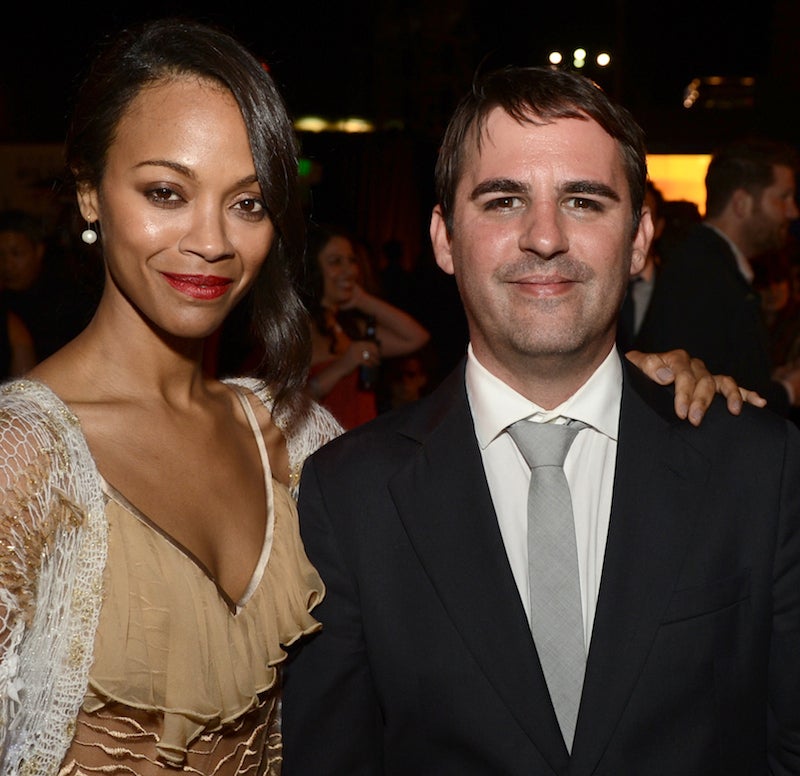
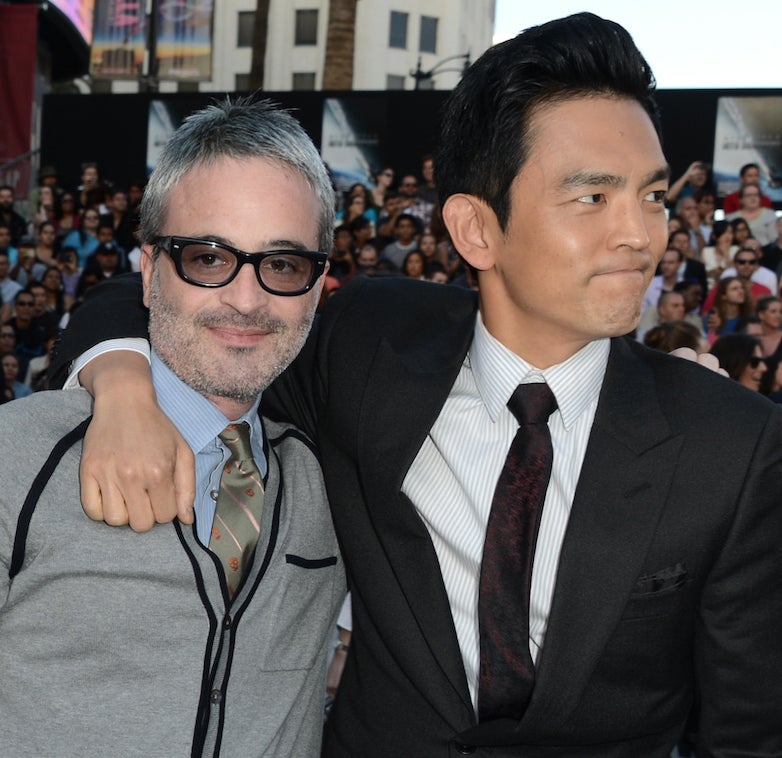
When screenwriters Roberto Orci and Alex Kurtzman first took on the challenge of rebooting Star Trek half a decade ago, they understood they needed to serve two very different masters. The first: the non-geeks who enjoy big-popcorn summer movies but have maybe seen part of a Star Trek movie once years ago on cable — and it was the one with the whales.
The second: hardcore Trekkies who are hungry to see their beloved franchise revived but absolutely do not want their beloved sci-fi universe destroyed.
With the 2009 reboot, at least no one had ever seen how Kirk, Spock, Bones, Uhura, Scotty, Sulu, and Chekov first came together as the crew of the U.S.S. Enterprise. That undiscovered country, along with the crafty decision to reset the Trek timeline thanks to some time-traveling Romulans, allowed the screenwriters to largely please both Trek newbies out for a good time and Trek faithful eager to have their obsession finally given the full-throated Hollywood treatment it deserved.
The sequel, however? That's a tribble of a different color.
Joined this time by screenwriter Damon Lindelof (Prometheus, Lost), Kurtzman and Orci had a much trickier needle to thread. Not only did they have to live up to the first film, but they were also writing under the shadow of the first true Trek sequel: Star Trek II: The Wrath of Khan, universally regarded as the best Trek movie ever made.
Rather than run away from The Wrath of Khan, however, the Star Trek Into Darkness filmmaking team chose instead to embrace it, peppering the film with references both small and quite large to the 1982 Trek blockbuster. BuzzFeed spoke with Kurtzman and Orci about these "Easter Eggs" — as well as some knowing winks to the original Trek TV series.
Just one example: In the opening sequence of Into Darkness, Spock (Zachary Quinto), sitting in the middle of an erupting volcano, tells Kirk, "The needs of the many outweigh the needs of the few" — which is a direct quote from Wrath of Khan. Orci, however, insists he, Kurtzman, and Lindelof were never trying to reverse-engineer a classic Trek line, trope, or character into their script for Into Darkness.
"I think that would be Spock's philosophy in just about any universe, so it doesn't necessarily portend Wrath of Khan," he says. "The trick with these things is not to chase them. We weren't looking for a place to put that line in, but if you know Star Trek well enough, you just try and tell the story you want to tell, and if you find the spot where it fits, you put it in. Spock in a volcano [is] entirely different context than the original [film] in which you heard that line. Yet, it's still about sacrifice."
Adds Kurtzman, "We always think of this version of Trek as playing in harmony with [established] canon. By creating an alternate timeline, we are allowing familiar characters to come into the world and have very recognizable traits, and yet have their stories be somewhat different, and therefore unpredictable. The whole point of the alternate timeline was so that an audience can watch the movie and not know where it was headed. The jeopardy could always be real."
No more so than with the biggest nod to Wrath of Khan in Into Darkness...
1. Khan
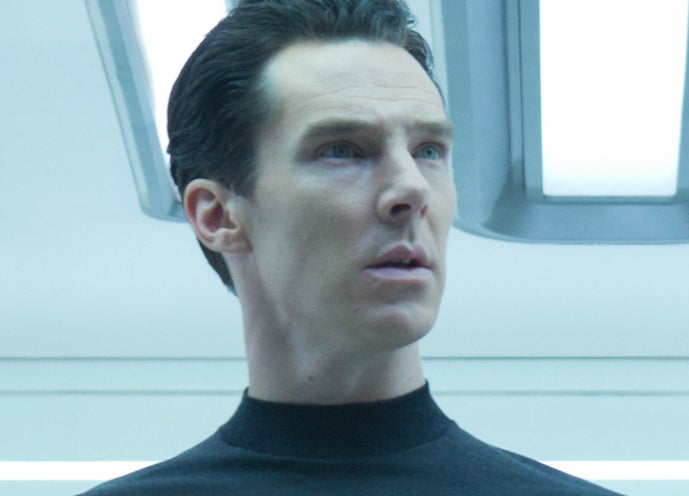

Next to core crew of the Enterprise, there is no character who looms larger in the Star Trek universe than Khan Noonien Singh.
"Speaking for myself, while I had liked the original series as a kid and found it on reruns, The Wrath of Khan was the 'big bang' of Star Trek for me," says Kurtzman. "I had always been a Star Wars fan, and no [Trek] bad guy had even come close to equaling Darth Vader. And then in walks Khan. Not only is he scary, but he has an extremely personal and specific agenda that was understandable despite being psychotic. I think anyone who loves Trek would immediately vault Khan to the top of the villain list."
For that very reason, in fact, Kurtzman says "there was a good year of debate" over whether to bring Khan into their film. Or, as Orci puts it with a laugh, "To Khan or not to Khan."
"The choice to play in that sandbox is really complicated because when a character was as beloved as Khan, you really have to have a reason to do it," says Kurtzman. "Part of our thinking at first was designing a story that existed as its own solid story. If we could take that and then incorporate Khan into the mix in a way that felt reverent and appropriate for that story, we would do it. Without that standard, we wouldn't."
Obviously, the filmmaking team ultimately felt they did meet their standard. Early trade reports had Benicio Del Toro (Savages) and then Edgar Ramirez (Zero Dark Thirty) circling the role. By dint of their ethnic heritage alone, both actors would have evoked actor Ricardo Montalban's peerless performance — and Latin-inflected speech patterns — as Khan both in the original TV series episode "Space Seed" and in The Wrath of Khan.
Instead, the Into Darkness team ultimately went with an entirely different actor — the quite British Benedict Cumberbatch, who is revealed to be Khan halfway through Into Darkness after his cover as a Federation operative named John Harrison is blown by Kirk.
"Ultimately, I think we felt that we found a reason and a way to do it that was all of the things we needed it to be, and yet really different," says Kurtzman. "I think the mistake that we could have made, that we didn't want to make, was to do a version of what Ricardo Montalban had done so brilliantly, and then fall short of that. We all loved the 'Space Seed' back story, the idea that he was a man who loved his crew as his family — that was the understandable and relatable agenda. And then we built outward from there. There are things about Khan that are very familiar, and there are things that are entirely different, and that's exactly what we wanted to do."
2. The Death of James Kirk

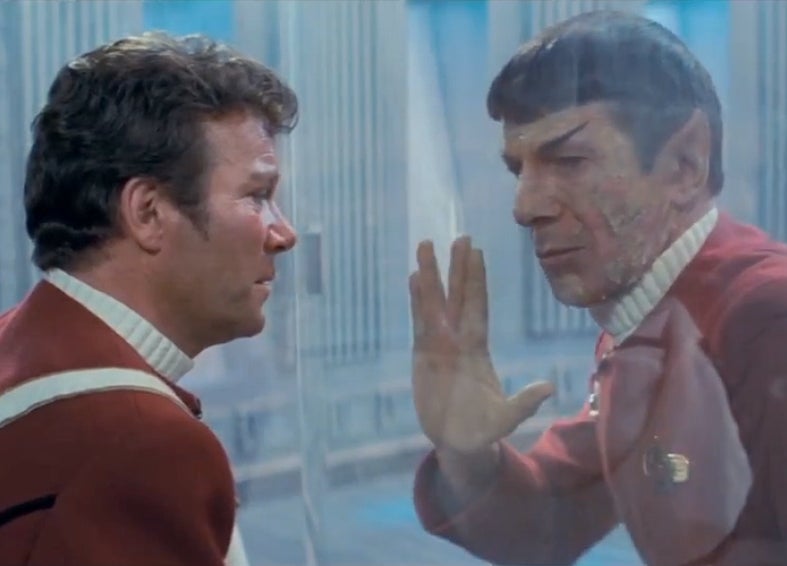
The climax of Wrath of Khan features Spock sacrificing himself to fix the Enterprise's malfunctioning engines and then dying from the radiation exposure as Kirk watches helplessly from a clear barrier. The climax of Into Darkness is pretty much exactly the same, except Kirk and Spock switched places.
In both cases, the scene makes a powerful statement about the relationship between the two men, and that's precisely why Orci and Kurtzman say they wrote it.
"We came to that because again, as Alex was saying, you can't just do that and then make it for no reason — it has to have a context," says Orci. "In The Wrath of Khan, the death of Spock and their last moment together is a punctuation and an acknowledgement of a friendship that has been fortified through years and years of their journey together. Our [Kirk and Spock] haven't known each other that long, so in our movie, that moment is a revelation for Spock that Kirk is his friend. It's the beginning of Spock recognizing, Oh my god, this guy is my friend, and just as I figured it out, I lose him."
That revelation leads Spock to bellow the most immortal line in the original Trek movies: "KHHHAAAAAAN!" Once they decided to put Khan in their film, the screenwriters must have been itching to have someone scream that in their film, right? "No, not necessarily," insists Kurtzman. "We knew that if we could get to the point we wanted to get to, and it felt like it was a natural and organic reaction, a real reaction to the moment, then that would be a wonderful plus. But we didn't go into it trying to shoehorn it in."
3. Carol Marcus
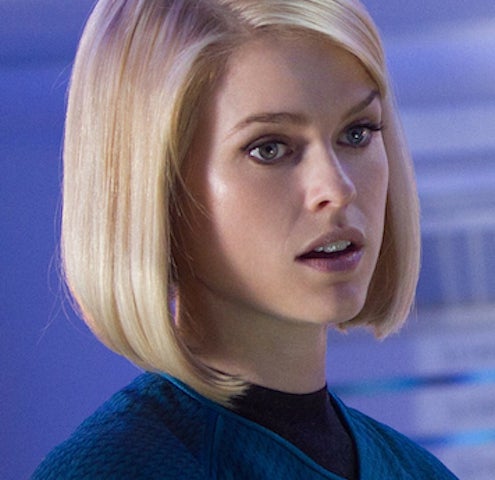
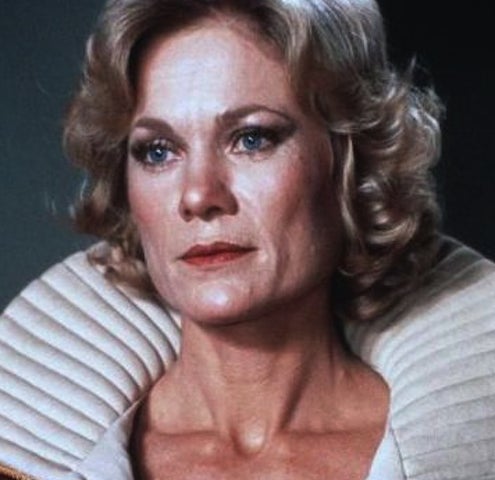
Other than Khan and Kirk's death, the biggest nod to Wrath of Khan comes in the form of Alice Eve's Dr. Carol Marcus. In the 1982 film, we met Marcus (Bibi Besch) years after her relationship with Kirk had led to a son, now a grown man working on a top-secret Federation science project with his mother. In Star Trek Into Darkness, a much younger Marcus is a weapons specialist who lies her way onto the Enterprise in defiance of her father, the militaristic Admiral Marcus (Peter Weller). There's definitely chemistry between her and Kirk (Chris Pine), but nothing close to the kind of romantic entanglement that could lead to a child. Yet.
The differences between the two characters, says Kurtzman, is quite deliberate. "The idea with Carol was that she was a character that obviously the audience has an association with from The Wrath of Khan," he says. "So you're immediately inheriting enormous implications having her in the movie. What we didn't want to do was rush it in a way that felt too familiar and too predictable. The idea with Carol was introduce a character that implies a lot of things, but leave it open enough that anything could happen in the next movie."
Like casting Cumberbatch, one of the ways they differentiated their Carol Marcus from the original Carol Marcus was to have British actress Alice Eve keep her natural accent for the role — the idea being that due to the vagaries of the alternative timeline, Ms. Marcus had grown up largely in England. "You want to stay open to surprises yourself," says Kurtzman. "When we started auditioning Carol, in walked Alice, who was so wonderful and had this kind of lovely quality and brightness and intelligence. That inspired us to think about, 'OK, if we like Alice, then how are we going to craft the character around the actress that we like and make it familiar and not inconsistent with what you've seen before?'"
4. Klingons
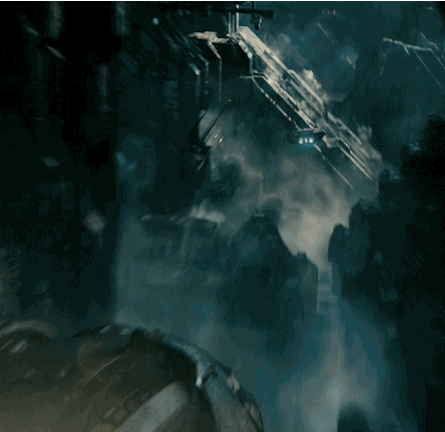
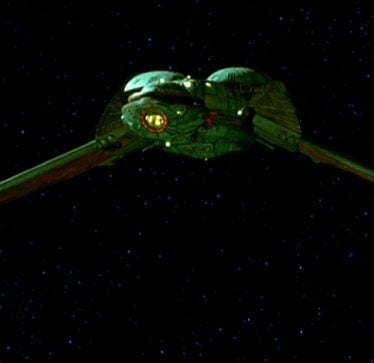
There is no alien adversary better known in the Trek universe than the Klingons, so Kurtzman and Orci — who also served as producers on Into Darkness — knew better than to mess too much with a good thing.
Especially the main Klingon battle cruiser: The Bird of Prey.
"The Bird of Prey, I think, signifies Klingons in a very unique way, and you can't really reinvent the basic shape of it," says Kurtzman. "You can update it in a way that's consistent with the way we've updated the rest of the [Star Trek], so there's a highly militarized take on it. It was always militarized, but even more so now."
Eagle-eyed Trekkies may also have noticed that one of the moons circling the Klingon homeward appears to have been blasted apart. Could that be Praxis, that moon that exploded in Star Trek VI: The Undiscovered Country?
"It certainly was inspired by Praxis," says Kurtzman. "However, it's not specified, so we're leaving it open as to exactly what that moon was."
5. Chekov in a Red Shirt
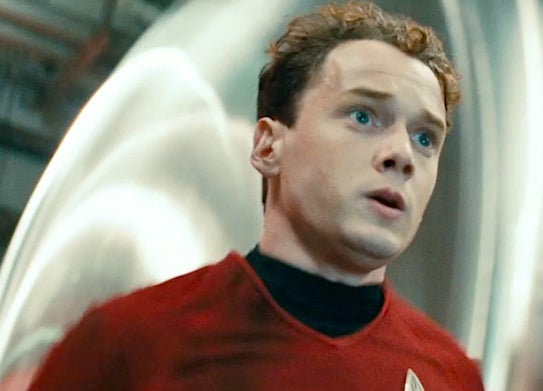

After Kirk promotes Chekov (Anton Yelchin) to chief engineer and tells him to put on a red shirt for the job, a look of dread falls over Chekov's face. In the context of the story, it's just because the young Chekov feels in over his head. In Trek lore, however, wearing a red shirt is tantamount to a death sentence.
"We knew exactly what the implication was there, for all the obvious reasons," says Orci. "What was fun about it was, technically, Chekhov needed to put on a red shirt to do that job, but it also obviously implies enormous foreboding. The audience then gets to sit with that and wonder how that's going to play out over the course of the movie, so we felt like it was really good tension, and it also gets a laugh every time. We love that too."
Adds Kurtzman: "We wanted the whole movie to be a guessing game of 'who's gonna die?' You see essentially all the characters go through danger."
6. Model Ships

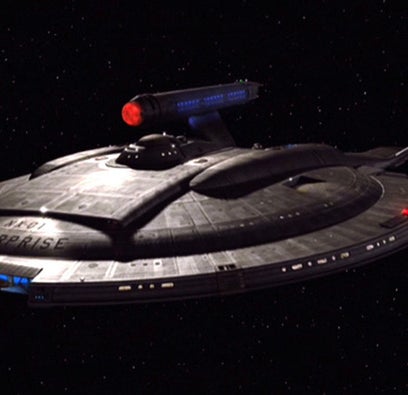
Another blink-and-you'll-miss-it super-geeky moment: In Admiral Marcus' office, a row of model ships cataloguing the history of manned space-flight includes the Phoenix from Star Trek: First Contact (i.e., the first manned ship to reach warp speed), and the Enterprise NX-01 from Star Trek: Enterprise, the UPN prequel series that predates the original Star Trek TV series by roughly 100 years.
More to the point, says Orci, the entire row of models — which includes the Apollo 11 rocket and the NASA space shuttle — is meant to remind audiences we are watching our own possible future unfold.
"I think one of the things that maybe distanced the general audience back in the day is that they felt like Star Trek was maybe this other universe," he says. "What we've always tried to do from the very beginning — starting with even the poster that says, 'The future begins' — is that the universe portrayed in Star Trek is our future, not some other stuff from other galaxies a long, long time ago. It's us. Things like [those models] connect the future to the present."
7. Nurse Christine Chapel
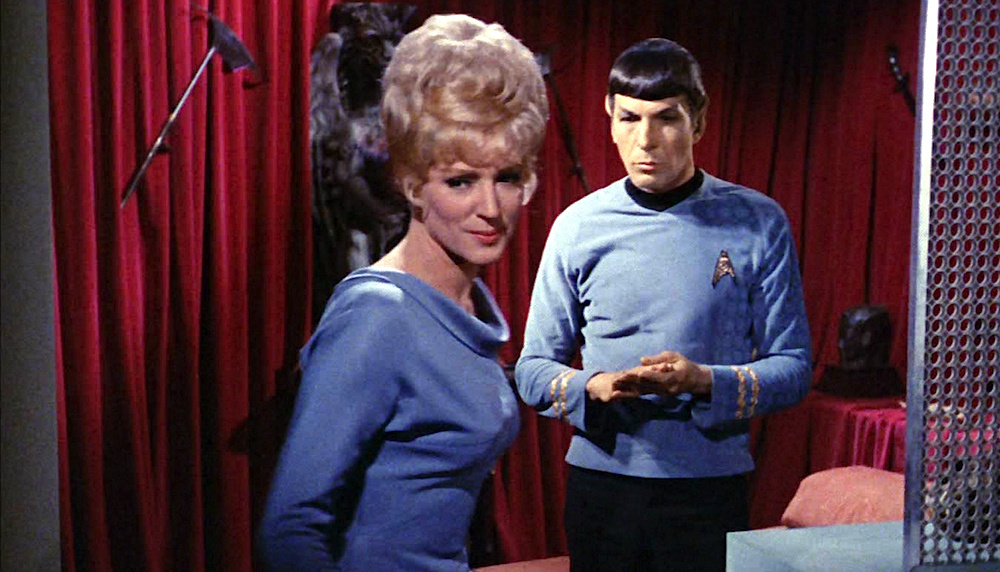
"Nurse Chapel is a beloved [Trek] character," says Orci. "Even before the first movie came out, a lot of online chatter was, 'Is Nurse Chapel gonna be there?!'"
Alas, although we hear Dr. McCoy (Karl Urban) say "Nurse Chapel" in 2009's Star Trek, we never officially saw Christine Chapel — and she's still MIA in Into Darkness. Instead, Carol Marcus tells Kirk that she learned of his reputation as a ladies man from her friend Christine Chapel, who has become a nurse since her romantic encounter with him — which he does not recall.
"We just figured that would be a great reference, and we loved that Kirk didn't remember her," says Orci. "It's an in-joke that also speaks volumes about his character when it comes to women. That's why we used it."
So will Nurse Chapel ever actually make a flesh-and-blood appearance on the Enterprise? Orci just laughs. "That's certainly possible!"
8. Scotty, the "miracle worker"

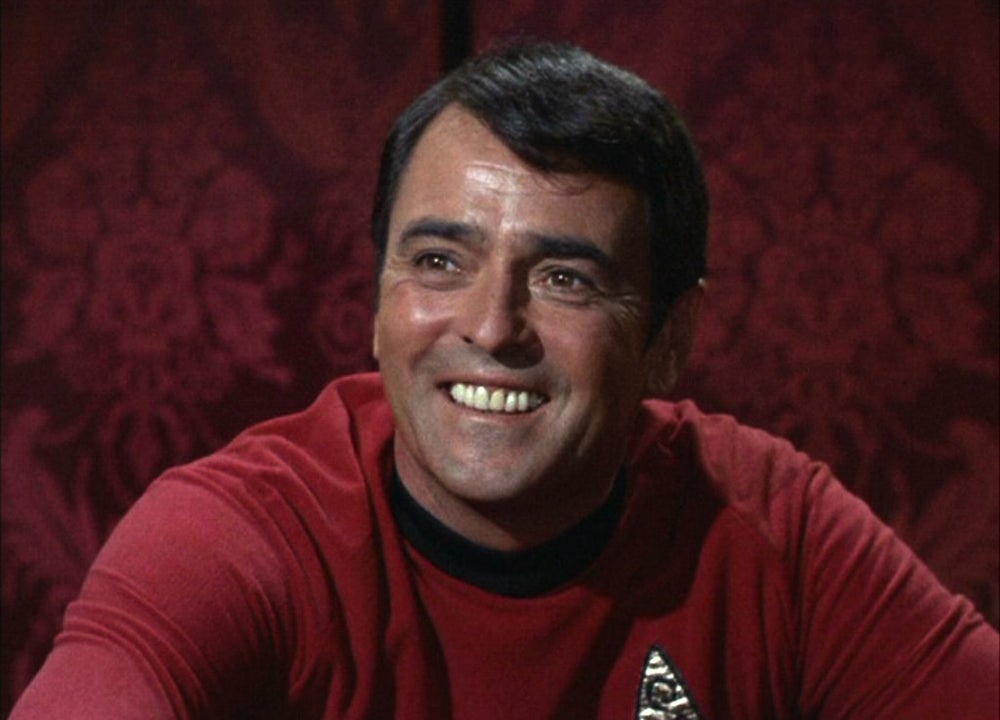
There's a quick moment after Scotty (Simon Pegg) saves the day in Into Darkness when Kirk calls him a "miracle worker" — an honor bestowed upon Scotty many times in the original series and films.
Turns out, the moment was due to a superfan request.
"To be honest, one of our friends who runs trekmovie.com, Anthony Pascale, said, 'You gotta have that line in there somewhere,'" says Kurtzman. "He reminded us that that was a classic thing, and we found the perfect place for it right there."
9. The "Mudd Incident"

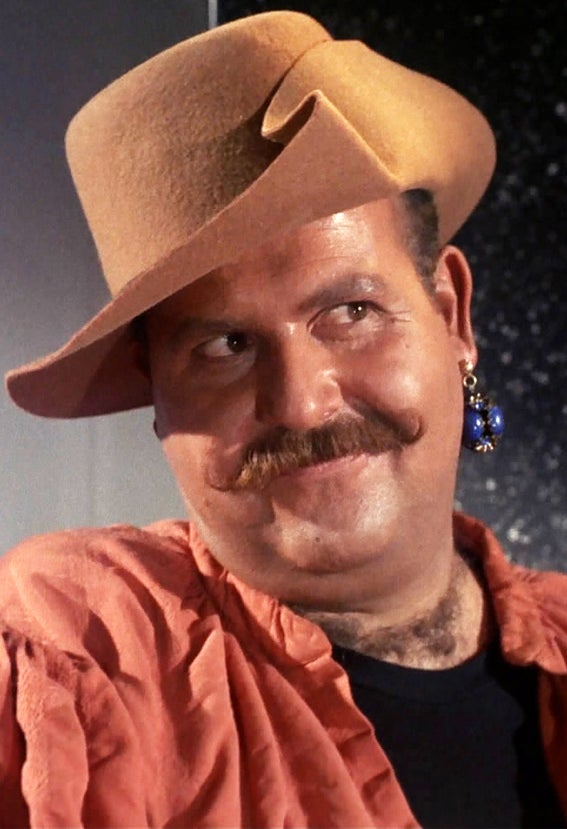
Perhaps the most obscure Trek Easter Egg in Into Darkness comes when Sulu (John Cho) announces that Kirk, Spock, and Uhura (Zoe Saldana) will be leading a covert away team to the Klingon home world using a ship collected from the "Mudd incident."
On the original Trek TV series, Harcourt Fenton "Harry" Mudd was a recurring character who was something of a 23rd century con man and smuggler. As the above photo suggests, he was meant largely as comic relief.
"I still have a giggle about [writing that line] now," says Orci.
Presumably, the Enterprise in the new timeline confiscated Mudd's ship at some point between the first and second films. (On the original series, it was destroyed in an asteroid belt.) But why bring Mudd into the mix in the first place? "It's kind of necessity is the mother of invention," says Kurtzman. "We knew that for the mission that Kirk wants to go on to work, it couldn't be a Federation ship. So why the hell would the Enterprise have a non-Federation ship on board? 'I got it! The Mudd incident!'"
UPDATE: The "Mudd Incident" is indeed explained in the Countdown to Darkness prequel comic books, penned in part by Orci and released earlier this year. It seems the Mudd in this timeline is Harry Mudd's half-Bajoran daughter. Of course.
10. The Return of (Old) Spock
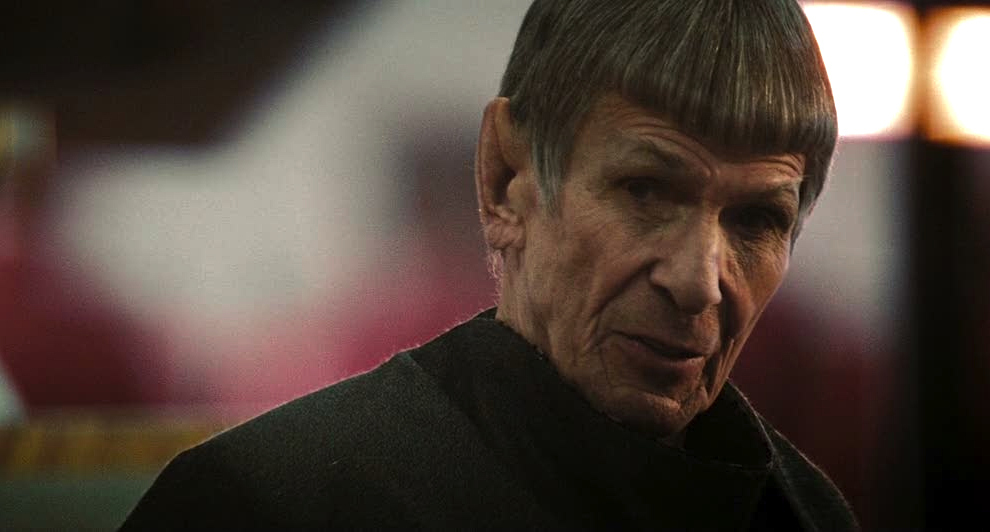
He may have appeared on screen for just a few minutes to give his young counterpart advice on how to defeat Khan, but audiences across the country have nonetheless been applauding the brief appearance of Leonard Nimoy's Spock in Into Darkness.
"We wanted to address the question that some fans have," says Orci, "which is, 'Would Leonard Nimoy's Spock tell everyone everything he could in order to prepare everyone for everything?' It was interesting for us to articulate the idea that he vowed not to tell anyone much of anything because he wants the universe to develop naturally, as it should. But in this one instance, when it comes to the greatest villain they ever faced, he makes an exception."
But didn't Nimoy proclaim himself retired after making 2009's Star Trek? Orci chuckles. "Leonard's the hardest-working retired man that I've ever seen."
